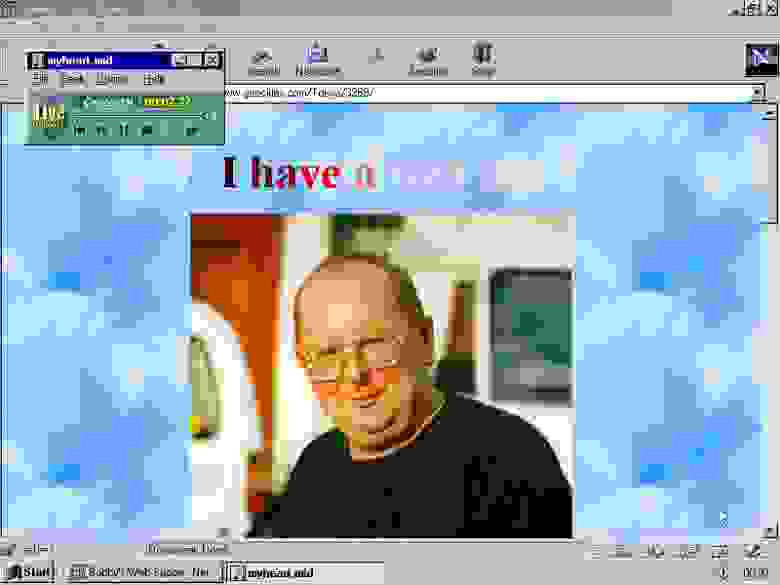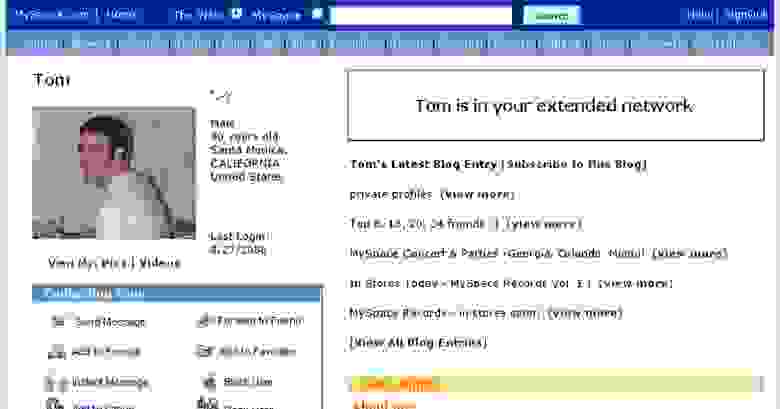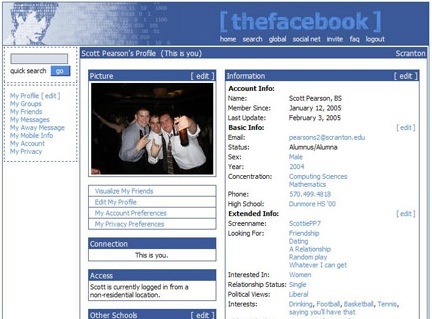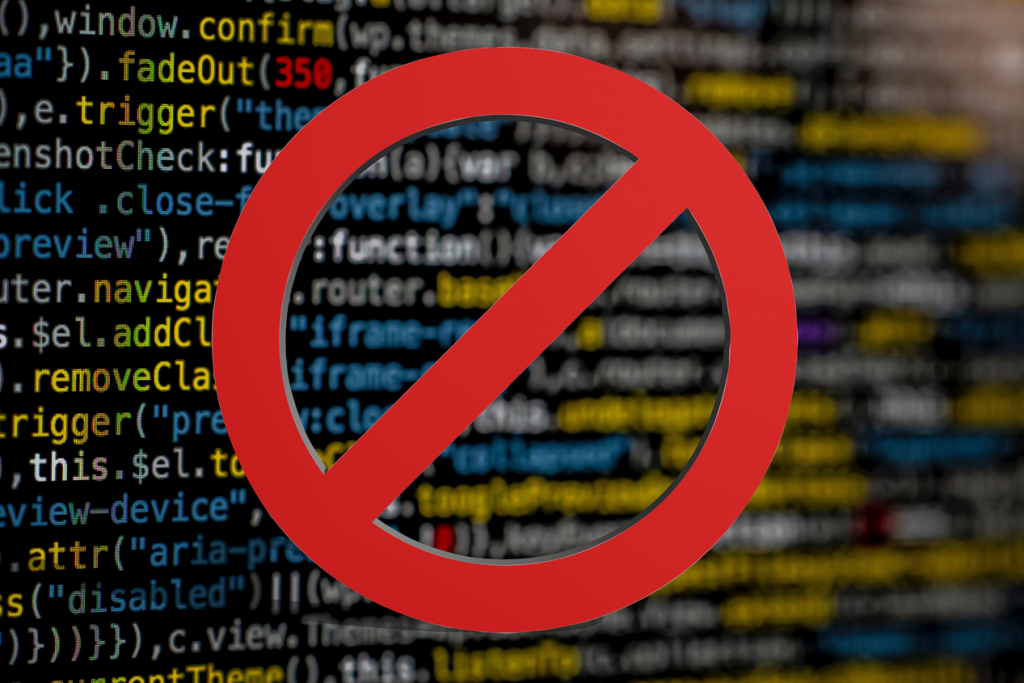No-code movement is a new approach to website and app development. It doesn't require technical knowledge. Does no-code movement have something in common with old image boards, guest books and creation of MySpace or Facebook? Yes, it does. And here is why.
No-code is a reflection of social tendencies made in technologies. To understand it, we need to discover the history from the beginning of the World Wide Web.
GeoCities was born on the dawn of the Internet as we know it. It became one of the first and most popular web hosting services. The very first internet users seemed like geeks and nerds. This image was embedded with stereotypes and pop-characters, like David Lightman from WarGames and similar to him. Geocities helped ordinary people to understand what they can do here and they won't turn into a movie character. These people understood the Web can be used not only for reading news but for sharing their interests, chatting and having fun. Internet became a little and warm virtual home for users of GeoCities.

MySpace was a modern home for the younger generation, more sparkly and free. It was focused on the networking and social aspects of life. Although the basis for every user was a page where they can add and personalize information. People can find out your interests, friends and other things you decided to place there. MySpace made a new step in the Internet evolution. The website gave users something more important than just a space for themselves. People have a feeling of popularity and importance when they looked at ones who made out and become a celeb. It was a start for counting friends years before people start to look for followers on Twitter or Instagram.

While MySpace showed people the power of social networks, Facebook was created to use it. «Ex-elite» social network becomes a place where people could reconnect and engage. It changed, evolved and become a huge business factor. To achieve these heights Facebook's team tried different methods to maximize engagement and retention of users. Pay attention to countless notifications that remind people about any breath anyone takes around their page.

Purchases of other companies were a smart move too. It gave Facebook an opportunity to connect even more people and turn almost every user of Instagram into a blogger. Business and money were made on the Internet since GeoCities times. It forces people to go into a digital business, because of the huge amount of money circulating in this are. Social networks became a workplace for many users. Even those who aren't interested in social networks, in general, are tending to change their business and start their own page.
The Internet proved that it isn't just a place for freaks, as it might seem in the first years. It evolved and let people share their interests, become popular. People no longer compare their online friends count, but agencies try to find out results of an election, using followers and likes. How did that happen?

«The Internet is like alcohol in some sense. It accentuates what you would do anyway. If you want to be a loner, you can be more alone. If you want to connect, it makes it easier to connect», — Ester Dyson said. Basically, people use the Web to achieve different goals. Some try to meet their emotional needs, consciously or subconsciously, some try to earn money. They have one in common: they want a place for this. Which requirements it has?
Years ago users needed just a small piece of HTML knowledge to customize their pages (low-code) and now they don't need to code at all to use websites as pros. Social networks aren't no-code examples because they force users to play on their rules and cares about their profit instead of customers. They're just a good example of people's needs and ways they're trying to solve them.
No-code is a good response to people's needs, but without huge investments and long terms. It fits with people having an idea, with ones who knew what they going to do. Instead of selling ideas, they can start to implement ones.
No two no-code platforms will be the same. Some are distinguished by a good constructor of forms and tables, some by a powerful set of ready-made integrations or an advanced BI module. They are very good, but niche solutions as well. These websites provide opportunities to build unique data structures according to the user's vision, create a website, blog, marketplace or even mobile app. They use a simple subscription model without Freemium or hidden payments and all features are available from the box.

Future of the no-code looking bright. It overcame «childhood» problems, like unstable products, difficult or limited usage and adapt to modern requirements. So, we'll see that time between idea and its implementation is reducing.
Also, we'll see more projects built by small teams. Their developers will be customer-oriented, not technology-focused ones. It'll help to minimize wasting time and money because area specialists won't be handling through the third-party.
Don't let anything limit you. Use the no-code to conquer the digital world.
Sources used for article:
en.wikipedia.org/wiki/No-code_development_platform
new.blicio.us/no-code-today-and-tomorrow
shutterstock.com
quodid.com/quotes/1458/esther-dyson/the-internet-is-like-alcohol-in-some-sense
No-code is a reflection of social tendencies made in technologies. To understand it, we need to discover the history from the beginning of the World Wide Web.
What made GeoCities, Myspace and Facebook popular?
GeoCities was born on the dawn of the Internet as we know it. It became one of the first and most popular web hosting services. The very first internet users seemed like geeks and nerds. This image was embedded with stereotypes and pop-characters, like David Lightman from WarGames and similar to him. Geocities helped ordinary people to understand what they can do here and they won't turn into a movie character. These people understood the Web can be used not only for reading news but for sharing their interests, chatting and having fun. Internet became a little and warm virtual home for users of GeoCities.

MySpace was a modern home for the younger generation, more sparkly and free. It was focused on the networking and social aspects of life. Although the basis for every user was a page where they can add and personalize information. People can find out your interests, friends and other things you decided to place there. MySpace made a new step in the Internet evolution. The website gave users something more important than just a space for themselves. People have a feeling of popularity and importance when they looked at ones who made out and become a celeb. It was a start for counting friends years before people start to look for followers on Twitter or Instagram.

While MySpace showed people the power of social networks, Facebook was created to use it. «Ex-elite» social network becomes a place where people could reconnect and engage. It changed, evolved and become a huge business factor. To achieve these heights Facebook's team tried different methods to maximize engagement and retention of users. Pay attention to countless notifications that remind people about any breath anyone takes around their page.

Purchases of other companies were a smart move too. It gave Facebook an opportunity to connect even more people and turn almost every user of Instagram into a blogger. Business and money were made on the Internet since GeoCities times. It forces people to go into a digital business, because of the huge amount of money circulating in this are. Social networks became a workplace for many users. Even those who aren't interested in social networks, in general, are tending to change their business and start their own page.
What unites no-code movement and social trends?
The Internet proved that it isn't just a place for freaks, as it might seem in the first years. It evolved and let people share their interests, become popular. People no longer compare their online friends count, but agencies try to find out results of an election, using followers and likes. How did that happen?

«The Internet is like alcohol in some sense. It accentuates what you would do anyway. If you want to be a loner, you can be more alone. If you want to connect, it makes it easier to connect», — Ester Dyson said. Basically, people use the Web to achieve different goals. Some try to meet their emotional needs, consciously or subconsciously, some try to earn money. They have one in common: they want a place for this. Which requirements it has?
- People want a simple place. No one wants to master their technical skills just to share a photo or write a post. That's why many used GeoCities, MySpace, Facebook, etc. Technical support takes care of people's pages and lets them an opportunity to focus on their needs.
- People want to start fast. Many individuals or business owners choose social networks as their first digital presence because they want to start today.
- People want to be heard. Creating hidden masterpieces doesn't interest the majority of people in our time. So, people look for a place where they can achieve their goal — to have support, to be popular, to earn money, etc.
Years ago users needed just a small piece of HTML knowledge to customize their pages (low-code) and now they don't need to code at all to use websites as pros. Social networks aren't no-code examples because they force users to play on their rules and cares about their profit instead of customers. They're just a good example of people's needs and ways they're trying to solve them.
No-code is a good response to people's needs, but without huge investments and long terms. It fits with people having an idea, with ones who knew what they going to do. Instead of selling ideas, they can start to implement ones.
Benefits of no-code development
- Say 'no' to bureaucracy. You won't ever lose time and important details during e-meeting with developers.
- Say 'no' to restrictions. You can change your website according to your needs instead of trying to adapt to the strict platform. Also, you choose how you can promote yourself and sell goods.
- Say 'no' to long funnels. You don't need to gain followers and then force them to «follow the links in bio». Choose the payment model you prefer the most and use built-in SEO, e-mail and push notifications to interact with people directly on your personal website or app.
- Say 'no' to wasted money.
No two no-code platforms will be the same. Some are distinguished by a good constructor of forms and tables, some by a powerful set of ready-made integrations or an advanced BI module. They are very good, but niche solutions as well. These websites provide opportunities to build unique data structures according to the user's vision, create a website, blog, marketplace or even mobile app. They use a simple subscription model without Freemium or hidden payments and all features are available from the box.

What will we see in the future?
Future of the no-code looking bright. It overcame «childhood» problems, like unstable products, difficult or limited usage and adapt to modern requirements. So, we'll see that time between idea and its implementation is reducing.
Also, we'll see more projects built by small teams. Their developers will be customer-oriented, not technology-focused ones. It'll help to minimize wasting time and money because area specialists won't be handling through the third-party.
Don't let anything limit you. Use the no-code to conquer the digital world.
Sources used for article:
en.wikipedia.org/wiki/No-code_development_platform
new.blicio.us/no-code-today-and-tomorrow
shutterstock.com
quodid.com/quotes/1458/esther-dyson/the-internet-is-like-alcohol-in-some-sense